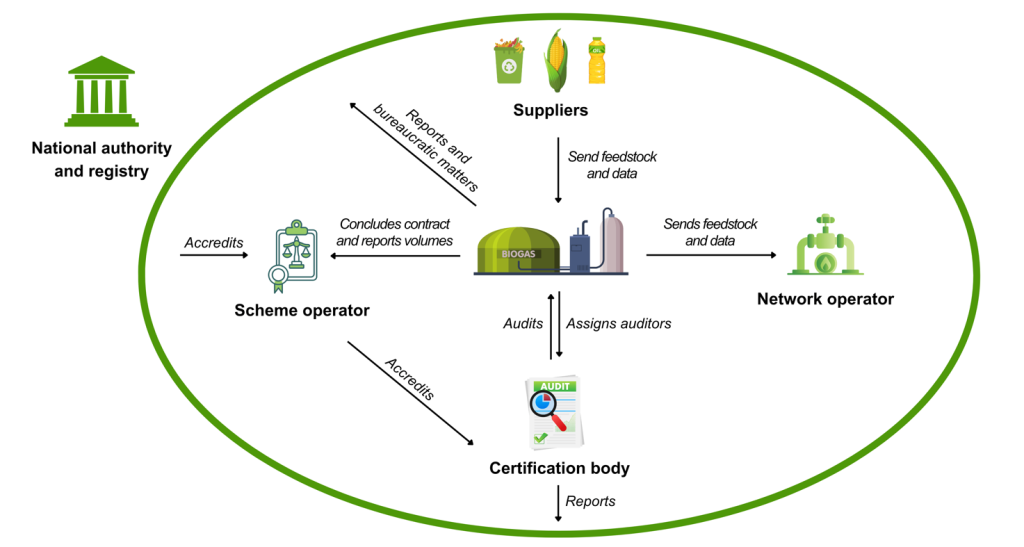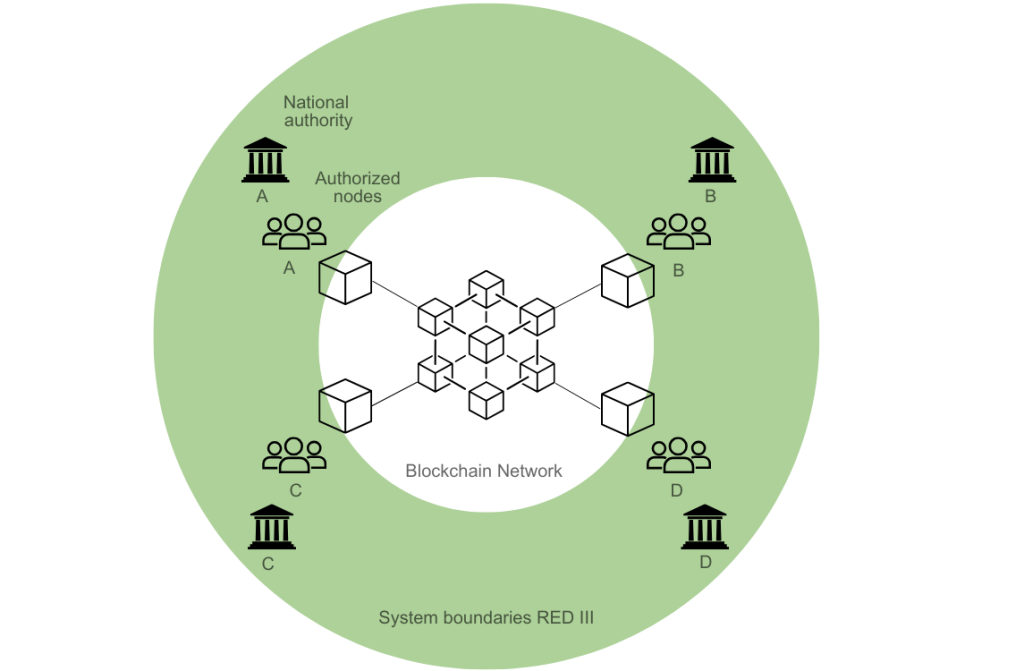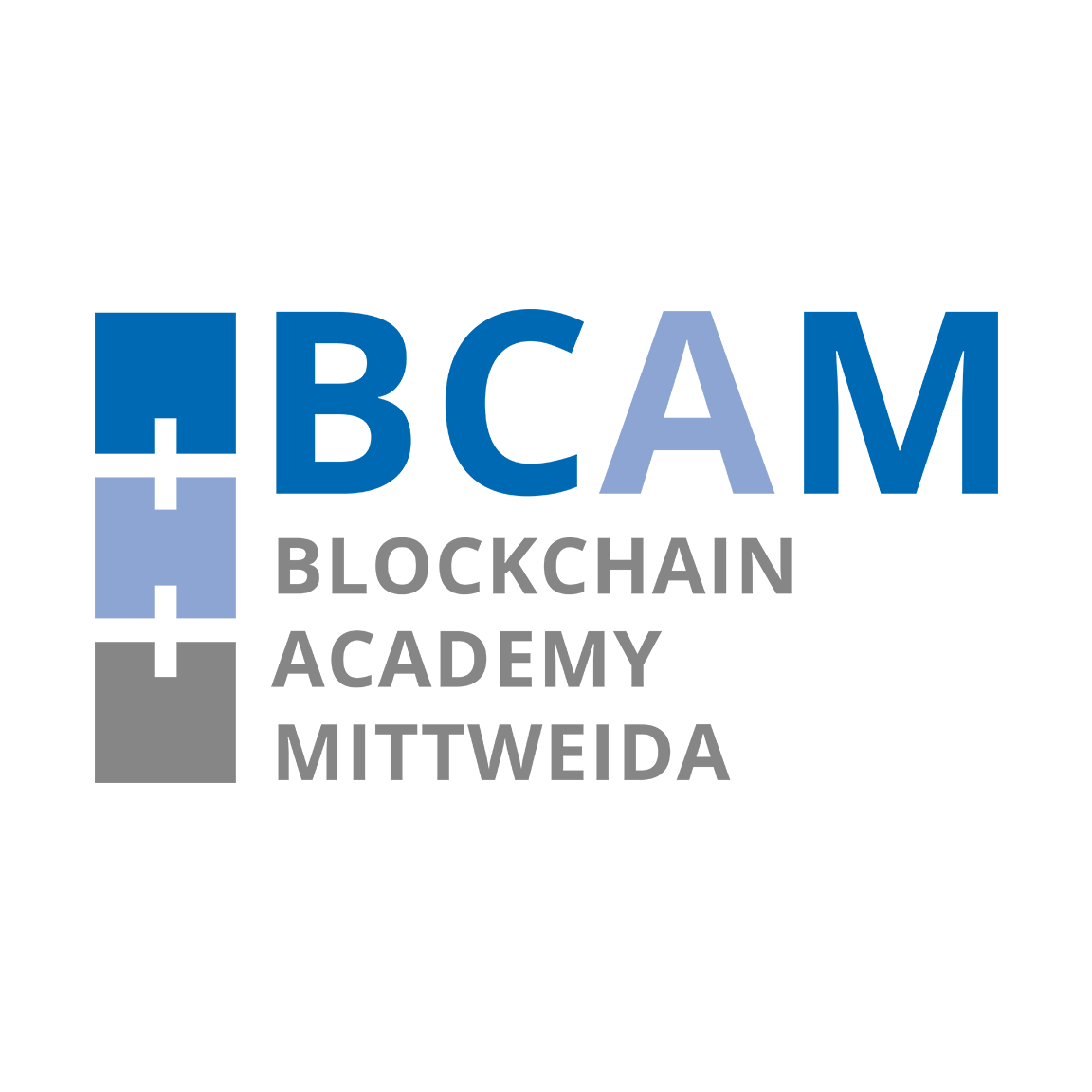Mapping Biomass: Ensuring Compliance and Interoperability in a Decentralized Value Chain
The European Union`s Renewable Energy Directive (RED III) mandates member states to certify sustainable biomass feedstocks under Directive 2009/28/EC, managed through national registries [1]. However, the flexibility granted to states has resulted in inefficiencies and a lack of transparency, with centralized systems often plagued by manual processes, fragmented data, and errors that complicate monitoring and cross-border exchange. Variations in national market designs and regulations further hinder cross-border integration, limiting the effectiveness of the current economy [2, 12]. Despite these challenges, enhanced market integration could yield cost savings, improved reliability, and optimized resource utilization, benefiting consumers with lower costs and better access to renewable energy. Addressing these inefficiencies is crucial for regulatory compliance, increased transparency, and system resilience [12, 13]. Furthermore, the administrative complexity and rising costs burden operators, threatening sustainable production and underscoring the need for streamlined and interoperable systems.
Methodology
This study adopts a Design Research approach, integrating solution development with iterative design, testing, and refinement. This method addresses the complexities of biomass certification and market integration by combining problem definition, stakeholder-driven prototyping, and real-world validation. By aligning practical solutions with the needs of biomass operators and regulators, Design Research ensures scalability and theoretical relevance.
Decentralized Economy
The European energy markets encounter substantial challenges stemming from a lack of standardization and harmonization, which negatively affect operational efficiency, transparency, and cross-border integration. Despite initiatives aimed at market integration and harmonization, significant gaps remain in achieving full transparency and interoperability, as highlighted in existing literature and stakeholder feedback [8, 10, 11]. These shortcomings emphasize the need for further development in regulatory frameworks and technological solutions to enhance market cohesion and functionality across the region.
The integration of certification systems across the European Union faces significant challenges, particularly in ensuring efficiency, transparency, and seamless cross-border exchange. The RED III mandates the certification of sustainable biomass feedstocks, starting at the input level, to enable accurate carbon footprint calculations and supply chain transparency. However, member states’ flexibility in designing and implementing certification schemes has led to inconsistencies in efficiency, data integration, and transparency [8, 10]. Current systems often rely on centralized, fragmented data management and manual processes, which are time-consuming, error-prone, and hinder the automation of certification workflows. These inefficiencies not only complicate the tracing of feedstocks and monitoring of certificates but also increase administrative burdens, contributing to financial pressures on biomass operators already facing declining subsidies and rising operational costs.

The development of interoperable and automated certification systems is essential for addressing inefficiencies in biomass supply chains. By leveraging advanced digital tools to accurately account for and trace feedstocks from their origin, certification processes can be significantly streamlined, minimizing errors and reducing administrative burdens. An integrated system would facilitate real-time tracking of biomass sustainability across borders, thereby improving market transparency, operational efficiency and regulatory compliance. These advancements align with the EU’s strategic objective of establishing a unified and sustainable energy market, delivering tangible cost reductions, optimized resource allocation, and enhanced system resilience [3, 4].
System Development
To address inefficiencies, a lack of transparency, and fragmented regulatory frameworks in the European energy market, a blockchain-based system must be designed to meet critical requirements for enhancing biomass sustainability certification and cross-border energy market integration. A bottom-up approach, accounting for all feedstocks from their origin, is essential to ensure comprehensive traceability and accurate CO₂ footprint calculations.
Design
The system must be decentralized and interoperable, eliminating reliance on centralized data silos and providing a unified access point for certification and trading data. By leveraging blockchain’s immutable ledger, transparency and traceability can be guaranteed, simplifying auditing processes and ensuring stakeholders have real-time insights into dynamic data. Smart contracts should automate workflows, reducing manual intervention and errors while enhancing operational efficiency. To ensure robustness, the artifact must implement cryptographic safeguards for data integrity and security, comply with the EU Renewable Energy Directive, and be scalable to handle high transaction volumes. Integration between certification and trading platforms is vital, linking sustainability certificates directly to volume units. This integration facilitates innovative mechanisms, such as peer-to-peer trading and dynamic pricing, optimizing renewable energy use. Furthermore, the system must accommodate regulatory and operational disparities among EU member states, enabling seamless cross-border transactions and market coupling. By addressing these challenges, the proposed artifact can enhance the European energy market, fostering a unified and resilient renewable energy ecosystem [5, 7].
Figure 2 illustrates the blockchain-based e-governance approach designed to enhance transparency, efficiency, and interoperability across sectors. At its core, a decentralized blockchain network connects all stakeholders, including national authorities, producers, and certifiers, ensuring compliance with European Union regulations. Authorized nodes operated by national authorities form the outer layer, maintaining system integrity within EU boundaries. The central blockchain enables secure and immutable data exchange, facilitating interactions between key sectors such as biomass production, logistics, energy generation, and monitoring. A message broker acts as a communication interface, linking sector-specific databases and enabling seamless data integration. The certification authority utilizes blockchain data to generate product graphs, issue sustainability certificates, and ensure traceability. This system promotes automation, reduces manual processes, and supports real-time oversight, contributing to a unified and sustainable European energy market.

Demonstration
The blockchain artifact will be developed within the framework of the BBBio project (Blockchain-based Biomass Certification), funded under the “WIR! – Wandel durch Innovation in der Region” initiative by the German Federal Ministry of Education and Research (BMBF), addresses key challenges in biomass certification through the integration of blockchain, Smart Contracts and Internet of Things (IoT). The overarching objective of this project is to automate time-consuming and manual processes, thus enhancing the efficiency, transparency, and digitalization of the biomass value chain. Central to the functionality of the artifact is the utilization of a decentralized, immutable ledger, which ensures comprehensive traceability and transparency throughout the biomass production process. The implementation of Smart Contracts automates the issuance of sustainability certificates, such as Proof of Sustainability (PoS), while cryptographic methods are employed to safeguard the integrity of the data and ensure compliance with relevant regulatory frameworks, such as the RED III.
The artifact adopts a batch-level approach for managing dynamic data, particularly CO₂ footprints, rather than incorporating these attributes at the individual token level. This method enables the secure, incremental updating of batch-related data through new transactions, thereby preserving historical records without overwriting or altering prior information. Such a structure improves transparency, accountability, and auditability, simultaneously reducing the administrative burden typically associated with conventional certification methods. Furthermore, this design facilitates streamlined compliance with regulatory standards, focusing on the traceability of biomass at the batch level. To ensure interoperability with existing certification systems and regulatory structures, the artifact incorporates open API interfaces. These interfaces enable seamless integration with external platforms, including trading networks and market participants, fostering cross-border data exchange and regulatory harmonization within the European Union.
The system’s open architecture allows for the integration of additional third-party applications, thereby enabling real-time monitoring, data analytics, and reporting capabilities, which enhance its functionality and scalability. Built upon Hyperledger Fabric, a modular, scalable, and enterprise-grade private blockchain framework, the artifact is designed to meet the high throughput demands of large-scale energy markets. Hyperledger’s permissioned network ensures secure access control by restricting system interactions to verified participants, thus mitigating the risks associated with unauthorized access. The modular architecture of Hyperledger supports customization to accommodate specific regulatory and operational requirements, while the pluggable consensus mechanism ensures scalability and fault tolerance, essential for a robust energy certification and trading infrastructure.
By leveraging these advanced blockchain technologies, the artifact provides an integrated, secure, and scalable solution that enhances the efficiency, transparency, and sustainability of biomass production, certification, and trade. In doing so, it contributes to the broader objectives of green energy transformation, enables the development of new e-governance approaches, and positions the research as a leading example of blockchain-based solutions in the cross-border renewable energy sector.
Conclusion
Blockchain technology holds transformative potential for global energy markets by addressing critical challenges, including fragmented certification systems, inefficiencies in manual processes, and limited cross-border integration. Its ability to ensure data integrity, automate processes, and support secure, decentralized operations makes it a promising solution. Features like open APIs and batch-level traceability further enhance its alignment with emerging regulatory requirements and different stakeholder infrastructures. However, implementation is not without hurdles. Legal and regulatory uncertainties, particularly at the interface of national and EU frameworks, pose significant challenges. Balancing transparency with data privacy presents ethical and technical dilemmas, while ensuring scalability, security, and interoperability across diverse systems requires careful design and execution. Despite these challenges, the potential benefits are considerable. Blockchain can drive efficiency, sustainability, and market integration in the energy sector. As the project enters its evaluation phase, efforts will focus on testing scalability, refining solutions to identified challenges, and demonstrating the artifact’s practical viability. This study provides valuable insights into blockchain applications in energy markets and e-governance.
References
[1] EUR-Lex.(2023). Directive (EU) 2023/2413 of the European Parliament and of the Council
[2] Algarvio, H., Lopes, F., Couto, A., Santana, J., & Estanqueiro, A. (2019). Effects of regulating the European Internal Market on the integration of variable renewable energy. Wiley Interdisciplinary Reviews: Energy and Environment, 8.https://doi.org/10.1002/wene.346.
[3] Boumaiza, A. (2024). Design and Implementation of a Blockchain-Enabled Transactive Energy Market. IEEE Access, 12, 143118-143130. https://doi.org/10.1109/ACCESS.2024.3440180.
[4] Bao, J., He, D., Luo, M., & Choo, K. K. R. (2020). A survey of blockchain applications in the energy sector. IEEE Systems Journal, 15(3), 3370-3381. https://doi.org/10.1109/JSYST.2020.2998791
[5] Cagigas, D., Clifton, J., Díaz‐Fuentes, D., & Fernández-Gutiérrez, M. (2021). Blockchain for Public Services: A Systematic Literature Review. IEEE Access, 9, 13904-13921. https://doi.org/10.1109/ACCESS.2021.3052019.
[6] Esmat, A., De Vos, M., Ghiassi-Farrokhfal, Y., Palensky, P., & Epema, D. (2021). A novel decentralized platform for peer-to-peer energy trading market with blockchain technology. Applied Energy.https://doi.org/10.1016/j.apenergy.2020.116123.
[7] Hardjono, T., Lipton, A., & Pentland, A. (2019). Toward an interoperability architecture for blockchain autonomous systems. IEEE Transactions on Engineering Management, 67(4), 1298-1309. https://doi.org/10.1109/TEM.2019.2920154.
[8] Höschle, H., Cadre, H., & Belmans, R. (2018). Inefficiencies caused by non-harmonized capacity mechanisms in an interconnected electricity market. Sustainable Energy, Grids and Networks, 13, 29-41. https://doi.org/10.1016/J.SEGAN.2017.11.002.
[9] Ren, K., Ho, N., Loghin, D., Nguyen, T., Ooi, B., Ta, Q., & Zhu, F. (2023). Interoperability in Blockchain: A Survey. IEEE Transactions on Knowledge and Data Engineering, 35, 12750-12769. https://doi.org/10.1109/TKDE.2023.3275220.
[10] Ringler, P., Keles, D., & Fichtner, W. (2017). How to benefit from a common European electricity market design. Energy Policy, 101, 629-643. https://doi.org/10.1016/J.ENPOL.2016.11.011.
[11] Squicciarini, G., Cervigni, G., Perekhodtsev, D., & Poletti, C. (2010). The integration of the European electricity markets at a turning point: from the regional model to the Third Legislative Package. https://hdl.handle.net/1814/14294.
[12] Venizelou, V., & Poullikkas, A. (2024). Trend Analysis of Cross-Border Electricity Trading in Pan-European Network. Energies. https://doi.org/10.3390/en17215318.
[13] Zalzar, S., Bompard, E., Purviņš, A., & Masera, M. (2020). The impacts of an integrated European adjustment market for electricity under high share of renewables. Energy Policy, 136, 111055. https://doi.org/10.1016/j.enpol.2019.111055.

 Register
Register Sign in
Sign in